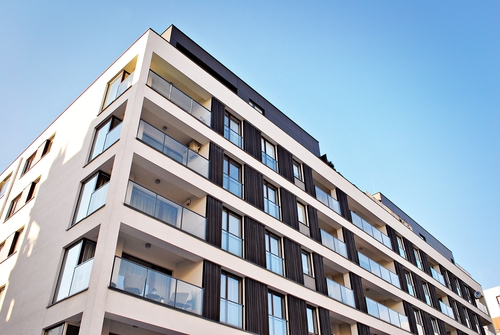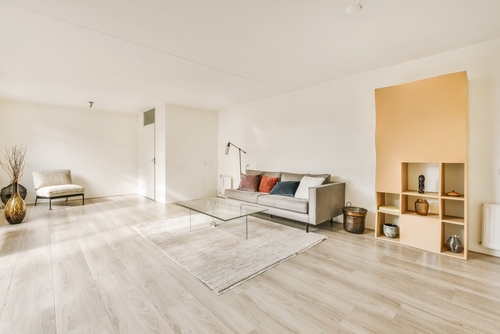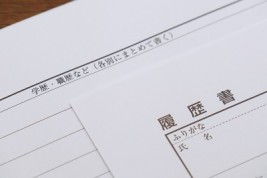When a foreigner starts working in Japan, it is important the company they will work for. Then it comes another important point, that is the place where they will live. It is common to rent an apartment in places where you can easily go to work, but there are other options as well, and some companies can reduce the burden of housing costs with their peculiar welfare system.
This time, we will explain what you should know about welfare-related housing allowance at Japanese companies if you live in Japan.

Contents
Japan’s Housing Subsidy System that Reduces the Burden of Housing Costs
Housing costs are a major part of living expenses. Foreigners living in Japan for the first time do not know the rent market, so various concerns will arise. For reference, we will introduce the rent market price in Tokyo.
Rental market price in Tokyo, Kanagawa, Saitama, Chiba
According to the “2018 Survey of Housing and Land Statistics, Basic Tabulation on Houses and Households” (Statistics Bureau, Ministry of Internal Affairs and Communications, September 30, 1980), “Rents / rents per month” for three prefectures in Tokyo are It is like.
・ Tokyo: 81,001 yen
・ Kanagawa Prefecture: 68,100 yen
・ Saitama Prefecture: 59,358 yen
・ Chiba: 57,421 yen
The Tokyo metropolitan area is out of the 80,000-yen range, the next highest is Kanagawa prefecture with about 68,000 yen, and the Saitama and Chiba prefectures are in a 50,000 yen range. Many companies are concentrated in Tokyo, so those who want to live close to work should be prepared for those rent expenses. Of course, there are many Japanese who live in Kanagawa, Saitama and Chiba and go to work in Tokyo. For foreigners who want to reduce their rent, or who want to prioritize the size and layout of their homes, one option is to find a home in one of the three neighboring prefectures.
Work with peace of mind at a company with a housing allowance!
Many Japanese companies have a housing subsidy program as part of their welfare. For example, “Company A with a monthly income of 300,000 yen and no housing subsidy” or “Company B with monthly income of 270,000 yen and half of rent as housing subsidy”, which is the most attractive company? From a medium- to long-term perspective, you may be able to judge that “it is better to choose Company B”. So, when choosing a company in Japan, be sure to judge not only the salary but also the availability and content of the housing allowance system.

What Kind of Housing Allowance Systems Exist?

In general, Japanese companies provide a certain amount of monthly payment to employees who meet the conditions stipulated by the company, but there are several other patterns. Let’s explain about the general housing assistance system.
01: Rent subsidy (Housing allowance)
The most common housing assistance system is rent subsidy (housing allowance). Rent subsidy is a welfare program in which the company pays a portion of the employee’s housing expenses as an allowance. It is provided for the purpose of subsidizing rent for employees living in rental housing and subsidizing mortgages for employees living in their own homes. Even if there is a rent subsidy system, the terms and conditions of payment vary depending on the company.
02: Rented company house
Borrowed company housing is a system in which employees live in houses rented by the company. It is common for a company to rent a property and collect a portion of the rent from the resident employee. The benefit is that the company pays a fixed percentage of the rent, so it can be cheaper to live in there than renting it yourself. In the past, it was common for companies to lease entire buildings and lend each house to employees, but recently employees often search for properties within the conditions and rent them under the company name.
In addition, in the case of the rent subsidy described above, since it is paid on top of the monthly salary, the tax burden and insurance premium burden on employees will increase accordingly. On the other hand, rented company housing means that employees pay a fixed rent to the company, so there is no increase in tax burden or insurance burden.
03: Dormitory for employees
An employee dormitory is a building owned by the company for the residence of employees. Some dormitories are furnished and provide a telephone line, and some are equipped with meals (meals are offered cheaply). When you move in, you pay a fixed amount of rent, but you can use it for a much lower price than renting a nearby property yourself.
However, employee dormitories have been declining in recent years due to the increasing number of employees who do not use dormitories even if they have dormitories, and the fact that many buildings were built during the period of high economic growth and are aging. As a result, finding a company with a dormitory could be difficult.

Examples of Japanese Companies Housing Subsidies

The housing subsidy system is a non-statutory welfare that is provided by the company, so some companies do not have this system. According to the “Comprehensive Survey on Working Conditions in 2015” (Ministry of Health, Labor and Welfare), 45.8% of all companies provide some housing allowance. By industry, IT and other information and communications businesses accounted for 56.0%, indicating that more than half of companies provided housing allowances.
Of course, even if you have a housing subsidy system, the details will vary from company to company. For reference, examples of the conditions and amount of payment of the housing assistance system are explained below.
Payment conditions for rent subsidies (Housing allowance)
There are many cases where “distance” from the company is the condition for rent subsidy, such as ” ¥¥ monthly for employees living within ◯ km from the company.” The distance from the company varies depending on the company, such as 1.5 km, 2 km, 3 km, and 5 km. Some companies use the “number of stations” as a condition, such as “within ◯ stations from the nearest station to the company” instead of the distance.
In addition, some companies provide rent subsidy after 3 years of joining the company, as a condition of rent subsidy regardless of where they live.
Payment of rent subsidy (Housing allowance)
According to the “2015 Survey on Working Conditions” (Ministry of Health, Labor and Welfare), data indicate that the average amount of housing allowance per person is 17,000 yen. By industry, the information and communications industry, including IT, was ¥ 25,312, much higher than the average.
The actual amount of payment is set widely by the company, such as 15,000-yen, 30,000 yen, and 50,000 yen. In addition, there are companies that define it as “50% of rent”. However, in this case, there is often a limit.
Due to the shortage of human resources in the IT industry in recent years, more companies are introducing new rent subsidy systems or increasing the amount of rent subsidies to acquire excellent human resources.
Size and layout of rented company house and employee dormitories
The size and layout of rented company house and employee dormitories may vary from company to company. It usually depends entirely on whether the resident is single or married.
The company dormitories and employee dormitories where single employees are occupied generally are one-room size, 1K, or 1DK floor plans, with rooms ranging from 6 to 8 tatami mats (10 to 14 square meters). For rented company housing and employee dormitories where married employees are occupied by 3 to 4 family members, it is common to arrange a layout of about 2DK to 3LDK. The average goes from 19.4㎡ to 23.4㎡.

Conclusion

Foreigners working in Japan for the first time want to keep their expenses as low as possible until work is on track and life is stable. In this regard, companies that have systems such as rent subsidies (housing allowances), rented company housing and employee dormitories can help reduce the rent burden. When researching Japanese companies, be sure to check if there is a housing subsidy in the benefits.
If you have a rent subsidy (housing allowance), be sure to check the payment conditions. For example, if “3 years of service” is a condition, you will not be able to receive assistance for the time being. In some cases, it is not eligible for payment. Be sure to check with your HR representative if you have any questions.











